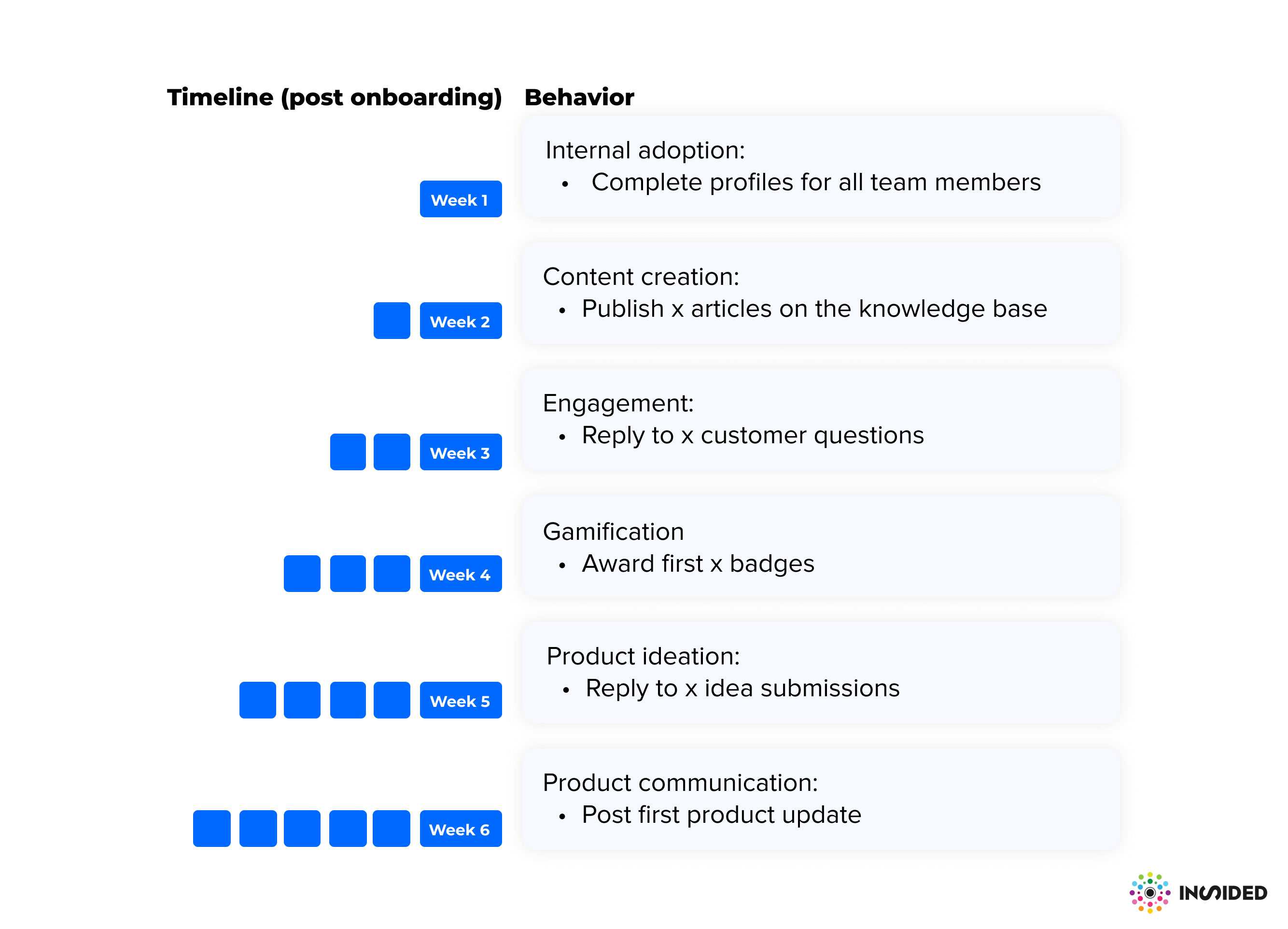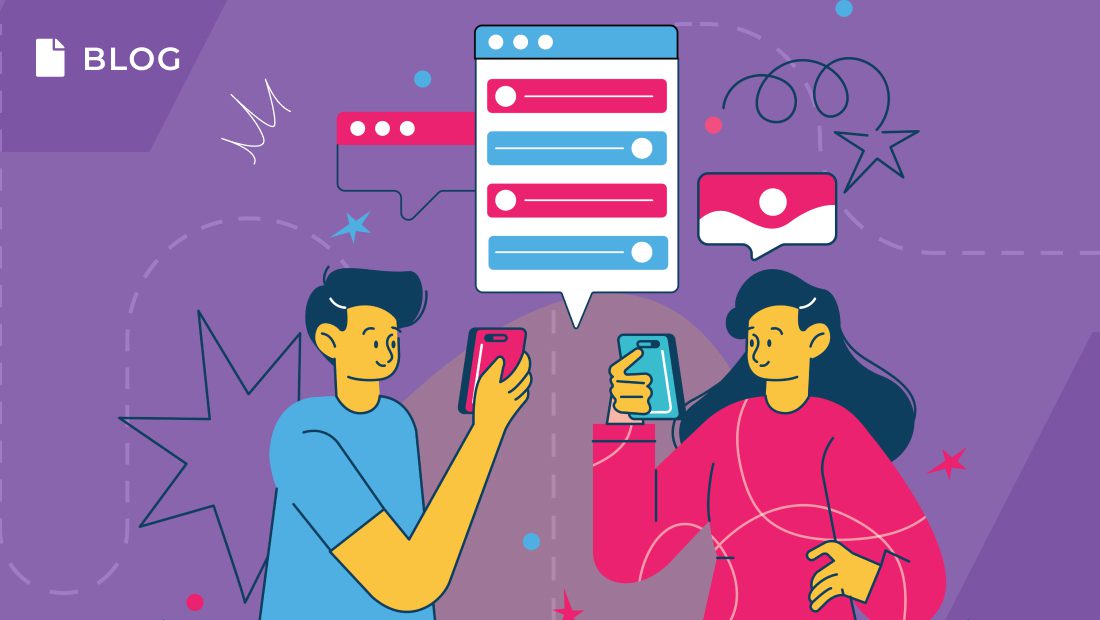Originally published on inSided.com on May 25, 2021.
Welcome to the third post in our new series, This is Digital Customer Success where we set out to get clarity on all things Digital CS. In our first post, we started off by defining Digital Customer Success and explained how it’s different from “traditional” Customer Success. Last week, we dove into the core components of Digital Customer Success.
Now, it’s time to get down in the trenches. Because where do all great CS plans start? With the customer. That’s why this week, we’re tackling the first step in building your Digital Customer Success program: mapping out the customer journey.
Mapping out the customer journey is not just about understanding what happens in each phase. It’s about identifying the outcome that will enable your customers to experience and realize recurring value from using your product.
So, how do you do that? You start by identifying key product behaviors that customers need to achieve to obtain value.
It’s time to rethink the customer journey as we know it.
Let’s get to it.
(Re)building the customer journey
There’s a lot to be said for what a customer’s journey could and should look like.
A frequent pitfall for SaaS companies, however, is to create vendor-focused customer journeys. Often, when we map out customer journeys, we tend to include very vendor-focused activities, created to make sure that we’re doing the right things, rather than making sure that the customer is doing the right things.
As Looker’s Brian LaFaille recently pointed out, “I see a lot of companies that have vendor-focused customer journeys. And it’s disappointing because it’s not thinking through the customer’s lens.”
For example, you might have the usual suspects on the agenda such as monthly check-in calls, QBRs, and additional training sessions. We’re not saying they’re not important, but they’re often tick-the-box activities from the vendor. It’s the typical cadence your customers go into, one that doesn’t necessarily create value because you haven’t identified exactly how that value is achieved.
So if the customer journey map (as we know it) goes out the window, then what the heck does a customer journey look like?
Identify key product behaviors
In order to move away from a vendor-focused approach, rather than customer journey mapping in its traditional sense where you focus on activities– you’ll do behavior mapping.
Behavior mapping really comes down to one simple question: What customers are achieving what behaviors in what period of time?
If you break this down, you have three distinct attributes you need to identify:
- What customers (or customer segment)?
- What behaviors?
- What period of time?
Even if you haven’t crunched the numbers before, you’ll probably still have a good idea of what customers are doing well and are getting the most value. Start with those.
The great thing? These are all quantifiable product behaviors. Product adoption and usage are the prerequisites that result in value creation for customers. Identifying exactly what the key product behaviors are and when they need to happen, is what ultimately will drive success.
So next, the question is how do you identify key product behaviors? Well, you start by creating a number of hypotheses.
Create your hypotheses
To identify key product behaviors, you first need to create hypotheses. It’s important to note that any company, of any size, can do this. You don’t need to have thousands of customers to make sure the result is statistically significant. You just need to start somewhere and work with what you DO have.
Gather people from Success, Sales, Product (the more teams and input the better!) and start formulating hypotheses for these behaviors.
Now, there are two rules:
- The behaviors have to be time-bound
- The behaviors have to be trackable
A good starting point would be to map out what behaviors customers need to achieve during the first six months. You could map this on a 30-day basis or on a weekly basis depending on the nature of your product or service.
You can also choose to tie the hypotheses into the customer lifecycle. For example, at inSided, we know that after we complete onboarding and customers launch their communities, they need to take certain actions to make their communities a success.
Here’s a simplified example of what that could look like:

Test your hypotheses
Once you’ve collected all the hypotheses and agreed on which ones to try, it’s time to go out there and test them. Can and will the data back these up?
If you have a data team in place – great! Hand over the hypotheses and ask them to do cohort analysis to see if the key behaviors you’ve mapped out lead to greater retention and expansion down the line.
Working with limited resources? No worries, as long as you can track product usage (remember the rules!) and can tie that into your CRM or CS platform, that’s all you need. The data doesn’t have to be fancy, it just has to be there.
Your data will come back in two formats:
- Positive indicators – greater engagement, adoption, or retention
- Negative indicators – less engagement, adoption, or retention
Once you know what behaviors are positive indicators, you then have an idea of what “good behavior” looks like in the context of your product or service. Now you have a roadmap that tells you exactly what behaviors you need to help customers achieve in a certain period of time.
That means you can start looking at what channels you can use to help influence and drive those behaviors. Whether it’s in-app guides, email communications, webinars, or a customer community, your next step is to identify what digital channels will be the most effective in helping customers take the actions needed to drive those behaviors.
But that’s a topic for another blog post! 😉
Final words
The path to creating a behavior-led customer journey map is going to look different at every company. It will come down to your resourcing, size, data capabilities, and so on. In a smaller company, a single individual could be responsible for building this out, while in a bigger company a number of teams would be involved, such as Customer Success, Customer Marketing, and Product. Like we mentioned earlier, start with what you do have and go from there.
Let customer behaviors guide the way until you have a roadmap that helps you understand exactly what you need to do (and when) to help customers obtain value – faster.
Our next blog post in this series will go live next week, subscribe to our blog to make sure you don’t miss it! In the meantime, here’s some content you might want to dig into:
- Blog post: Defining Digital Customer Success (and how it’s different from “traditional” Customer Success
- On-demand webinar: The rise of the Digital CSM – and why you need one!
- Podcast: Your CS team is at risk of becoming the “everything department”
Learn More
Looking create a single destination for your customers to connect, share best practices, provide feedback, and build a stronger relationship with your product? Schedule a demo to learn more.

